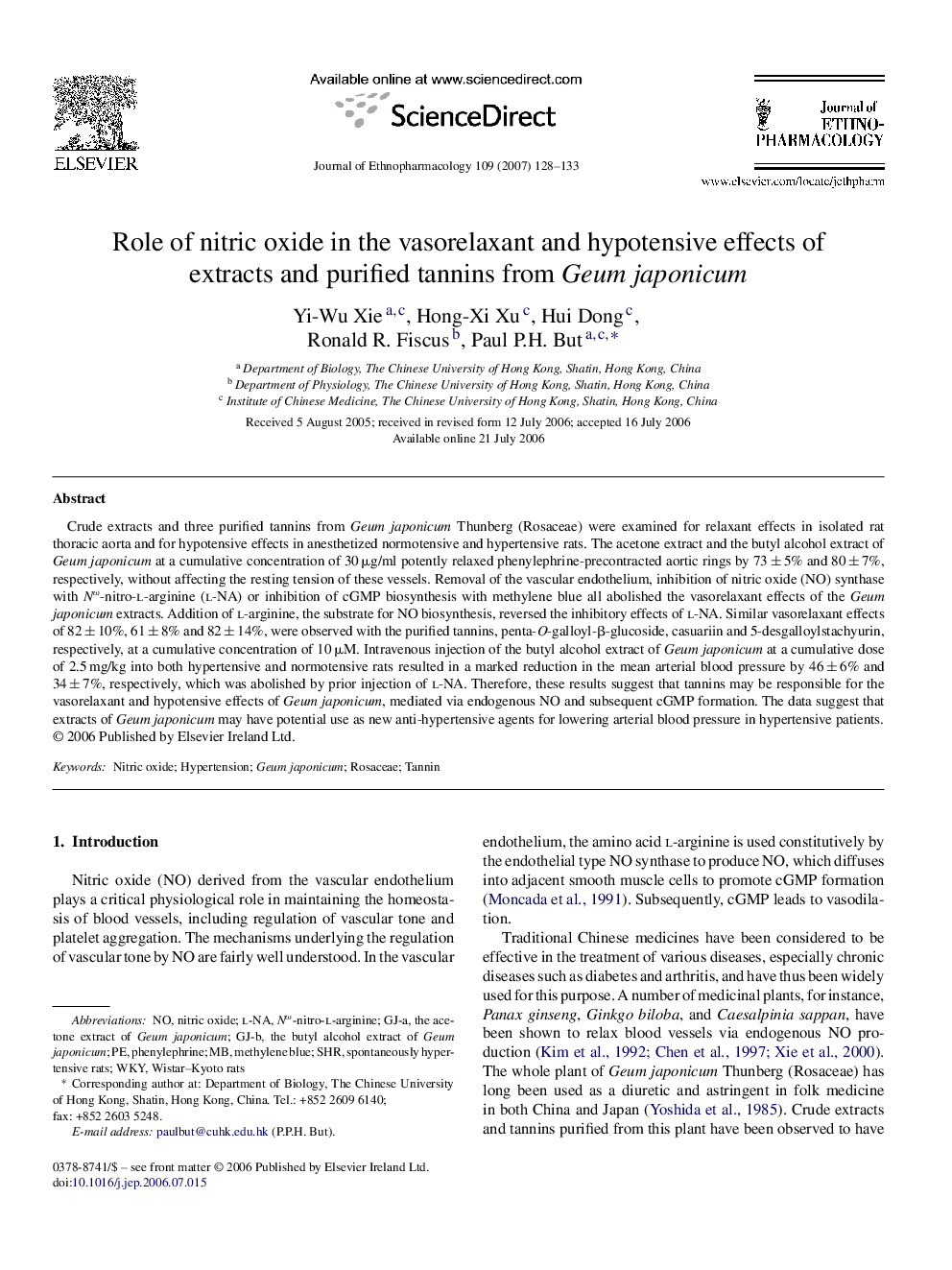| Article ID | Journal | Published Year | Pages | File Type |
|---|---|---|---|---|
| 2548487 | Journal of Ethnopharmacology | 2007 | 6 Pages |
Crude extracts and three purified tannins from Geum japonicum Thunberg (Rosaceae) were examined for relaxant effects in isolated rat thoracic aorta and for hypotensive effects in anesthetized normotensive and hypertensive rats. The acetone extract and the butyl alcohol extract of Geum japonicum at a cumulative concentration of 30 μg/ml potently relaxed phenylephrine-precontracted aortic rings by 73 ± 5% and 80 ± 7%, respectively, without affecting the resting tension of these vessels. Removal of the vascular endothelium, inhibition of nitric oxide (NO) synthase with Nω-nitro-l-arginine (l-NA) or inhibition of cGMP biosynthesis with methylene blue all abolished the vasorelaxant effects of the Geum japonicum extracts. Addition of l-arginine, the substrate for NO biosynthesis, reversed the inhibitory effects of l-NA. Similar vasorelaxant effects of 82 ± 10%, 61 ± 8% and 82 ± 14%, were observed with the purified tannins, penta-O-galloyl-β-glucoside, casuariin and 5-desgalloylstachyurin, respectively, at a cumulative concentration of 10 μM. Intravenous injection of the butyl alcohol extract of Geum japonicum at a cumulative dose of 2.5 mg/kg into both hypertensive and normotensive rats resulted in a marked reduction in the mean arterial blood pressure by 46 ± 6% and 34 ± 7%, respectively, which was abolished by prior injection of l-NA. Therefore, these results suggest that tannins may be responsible for the vasorelaxant and hypotensive effects of Geum japonicum, mediated via endogenous NO and subsequent cGMP formation. The data suggest that extracts of Geum japonicum may have potential use as new anti-hypertensive agents for lowering arterial blood pressure in hypertensive patients.
